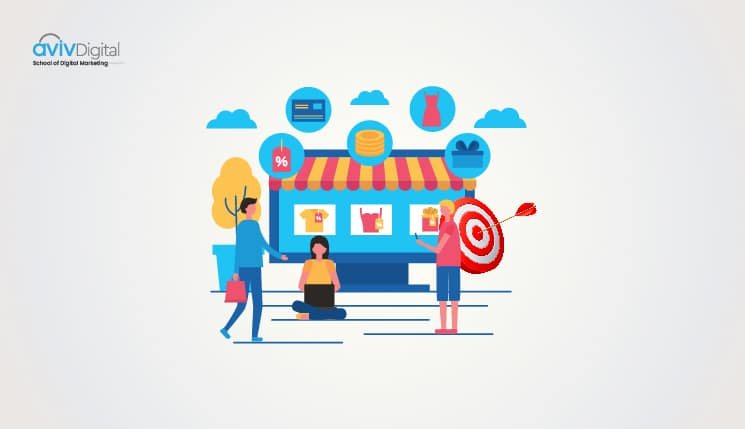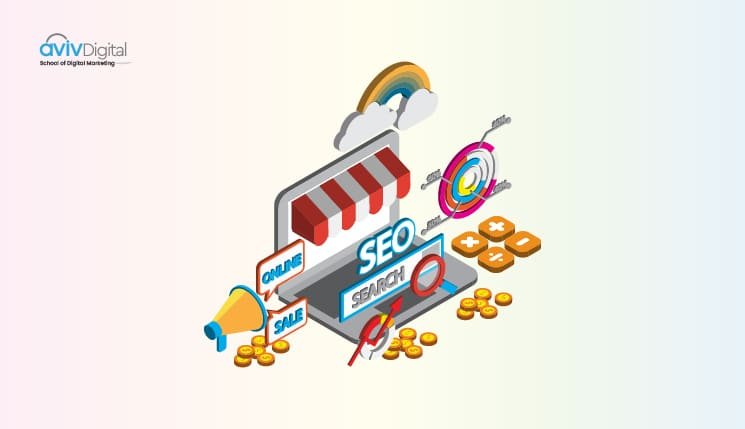

Imagine this: you are at a supermarket to buy perfume, and you have more than 10 brands in front of you. You must be familiar with a set of brands, or you must have heard something about a few from your friend, and you are confused. Everyone advertises their products and writes beautiful descriptions. Most of them release satisfactory products, but still, one brand takes our choice, surpassing others!
The right brand rules customer decisions in the competitive industry with something unique during the mind game of purchase. They are precisely aware of their targeted customers (you), purchasing preferences and what price it should be. The 2020 McKinsey report lists the following benefits for consumer behaviour analysis in business growth.
- It helps to reinforce and create behavioural shifts to position their products as a new trend and next normal
- Shape emerging habits with new products
- Cultivate new habits using contextual clues and changing circumstances.
- Align messages to consumer mindsets by customizing positive brand ethics and values to the consumer sentiment.
- Analyze consumer beliefs and behaviours at the micro level.
What’s Consumer Behaviour
Consumer behaviour studies how individuals and groups make decisions about buying, using, and disposing of goods and services. It includes the feelings, thoughts, and actions that influence these choices. This encompasses demographics like age and income but also psychological factors such as attitudes and motivations. Understanding these influences can create targeted marketing campaigns that resonate with each audience segment. Social and cultural influences also play an important role in shaping preferences for brands and products. Let’s dive deeper into Calicuts consumers and the social and cultural factors influencing their preferences.
Economic Dynamics
Tier 2 Cities in India, like Calicut are experiencing significant and sustainable growth over the past decades. Learning about economic undercurrents helps businesses to segment their target audience effectively and tailor pricing, promotions, and product offerings. Analyze the spending patterns to optimize product offerings and promotional strategies effectively. Customizing the pricing strategies helps to accommodate diverse purchasing capacities.
The three major factors—infrastructure development, skilled workforce development, and sustainability—help investors capitalize on opportunities. The availability of special economic zones results in industrial development and investments in infrastructure, creating a new consumer culture and area in town.
Technological Integration
As a fast-developing state in India, Calicut never lags in bringing modern-day technologies into everyone’s hands. The majority of Calicut’s population owns smartphones and accesses the Internet regularly. Technological advancements impact consumer behaviour in various models; the e-commerce boom is only one of them. The emergence of the ROPO effect (Research Online, Purchase Offline) impacts every product and service.
Offline businesses need to prepare strategies to uphold the competition with online purchasing culture. The pandemic period has affected mindsets of everyone to a stage we couldn’t even imagine a few years back. Recent rise of e-learning platforms, telemedicine and digitalisation in restaurant businesses are examples of Calicut’s adaptation to changing consumer behaviours.
Cultural and social factors
Understanding a location’s cultural and social factors helps one understand society’s thought formations. Cultural influences like traditions, customs, language, festivals, and food affect consumer spending patterns. The cultural significance of festivals helps businesses tailor their marketing strategies and offers accordingly.
The family structure strongly influences purchasing decisions. Social media exposure to global trends does influence consumer preferences. Calicut’s well-connectedness to the Middle East and other countries brings international trends into the town. Marketing campaigns resembling Calicut’s cultural behaviours are more likely to succeed.
Consumer Behavior Analysis
Consumer behaviour analysis is the systematic study and interpretation of consumer actions, motivations, preferences, and decision-making processes. This multidisciplinary field draws insights from psychology, sociology, anthropology, and more. It helps us understand why consumers behave the way they do and how their behaviour influences market dynamics. The following factors influence effect of consumer behaviour analysis.
Understanding Motivations
Consumer behaviour analysis begins with identifying the reasons that drive individuals to make purchasing decisions. It can be based on logic (fulfilling basic needs, seeking value for money) or emotions (for pleasure, social validation). Businesses can tailor marketing strategies to these factors by understanding consumer motivation.
Decision-Making Process
Consumers go through a series of stages when making a purchasing decision. These include problem recognition, information search, evolution of alternatives, purchase decisions, and post-purchase journeys. We examine these decision-making processes to identify factors that influence consumers at each stage. These can be personal preferences, social influences, cultural norms, and situational factors.
Segmenting Target Audiences
Consumer behaviour analysis enables businesses to segment target audiences based on demographic, psychographic, and behavioural characteristics. Identify distinct consumer segments with shared needs, preferences, and purchasing behaviours. Businesses can develop targeted marketing strategies and product offerings to resonate with specific audience segments.
Assessing Consumer Perceptions
Consumer perceptions and attitudes play a crucial role in shaping purchasing decisions and brand preferences. Consumer behaviour analysis includes assessing consumer perceptions of products, brands and marketing messages. It also includes overall attitude towards shopping consumption and loyalty. Understanding these perceptions and attitudes helps businesses to refine marketing strategies and communications.
Utilizing Data and Technology
Consumer behaviour analysis relies on data analytics tools to collect, analyze and interpret consumer data. The data can predict market trends consumer behaviour, and personalize marketing campaigns at scale. CRM (customer relationship management) systems integrate customer data from multiple sources to provide a centralized platform for customer interactions. Analyzing CRM data helps to identify opportunities to improve customer satisfaction communication and cultivate long term relationships with customers.
Mapping Consumer Purchase Journey
We have mentioned the importance of tracing customer behaviours during the purchase journey. Understanding the journey is essential for businesses to identify key points, influences, and decision-making factors that shape customer trends.
Problem Recognition
Problem recognition of customers begins with the need or desire from a source, like running out of an item, improving lifestyle, or responding to specific events. This stage can be influenced by cultural norms, personal preferences, and situational factors set to the landscape of Calicut. Consumers find a gap between their current and desired state, triggering them to seek solutions through product or service acquisition. Marketers can take advantage of this situation by pushing the needs and converting them into sales. Identifying common pain points and desires of the target audience in Calicut helps to tailor messages to capture the attention.
Information Search
Customers reach their decisions after passing the problem recognition stage and move to the next task. They rely on multiple factors to find alternative products and services and reach into multiple options before the final stage. This is where advertising efforts show their results, the promotional content helps them to be in this confusion stage. A study by Salesforce says 71% of shoppers use mobile devices in stores to complete tasks such as purchasing to read reviews. Businesses must optimize their online presence to ensure accurate and trustable information. A bad reputation or negative customer experiences can take away your long-term customers.
Evolution of Alternatives
The consumer considers a variety of alternative products and services before making the final decision. The customer evaluates these alternatives through various lenses, like financial and psychological ones. While some segments emphasize spending, others prefer quality and convenience over budget. Understanding customer psychology at various stages is essential in targeted marketing efforts. Invest your efforts in differentiating yourself from others with innovative strategies and establish your uniqueness in a competitive marketplace.
Segment customers based on their investment in product research and find your probabilities of reaching the target customer. Consumers do extensive research for infrequent purchases like expensive and risky high-needs items, and vice versa. Learning more about passing the ‘multiple options’ stage helps to generate better outcomes.
Selection
Consumers weigh factors like quality, price, and brand reputation while making purchase decisions. Take strategic decisions to simplify and save customers from “too much choice” situations. In sales sections like hypermarkets, exceeding choices can confuse customers and take them away from purchases. Sheena Iyengar researched this by placing a set of jams in a local grocery store for sale. The final results came that more purchases were made when fewer jams were placed. As the study concludes, fewer purchases are made when the choices are increased out of the options (Green,2010). Understanding consumers deeply and how they react to crucial situations influences purchase decisions in favour of your brand.
Post-Purchase Journey
Post-purchase journey is affected by customer satisfaction and community management. Consumer feelings and evolution greatly influence repeat purchases and word-of-mouth publicity. Understanding post-purchase expectations is essential for marketers to cultivate customer loyalty and maintain ongoing relationships with customers. This involves personalized follow-up communications, loyalty programmes, and opportunities for community involvement. Ensure your advertising stresses positive messages and creates a trustworthy ambience around the environment. Incase of big purchases, lack of services after purchase significantly affect your sales, as we experience in the automobile field. 53% of shoppers view the post-purchase journey as most emotional part of any shopping experience.
Conclusion
We have explored the potential of consumer behaviour analysis with respect to the socio-cultural and economic dynamics of Calicut, including the growth of Digital marketing. Investing your efforts into these strategies, demographics, psychographics, and shopping habits helps craft messages that speak directly to their needs. Marketers must have a clear understanding of the motivations, preferences, and decision-making processes of local consumers to outperform competitors
Aviv Digital is one of the leading Digital marketing course in calicut. We offer a wide variety of globally recognized certification programs that include SEO, SEM, SMM, Email Marketing and Inbound Marketing courses. For more details, Contact us at: +91 8156998844









